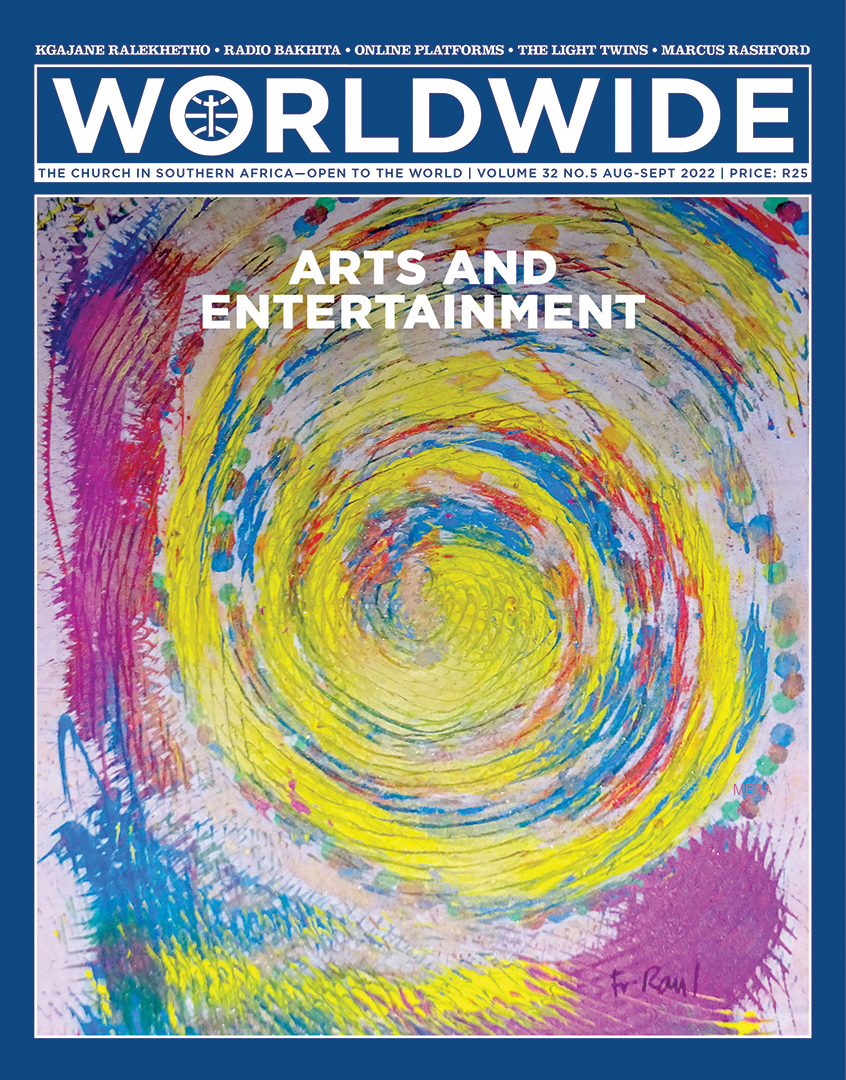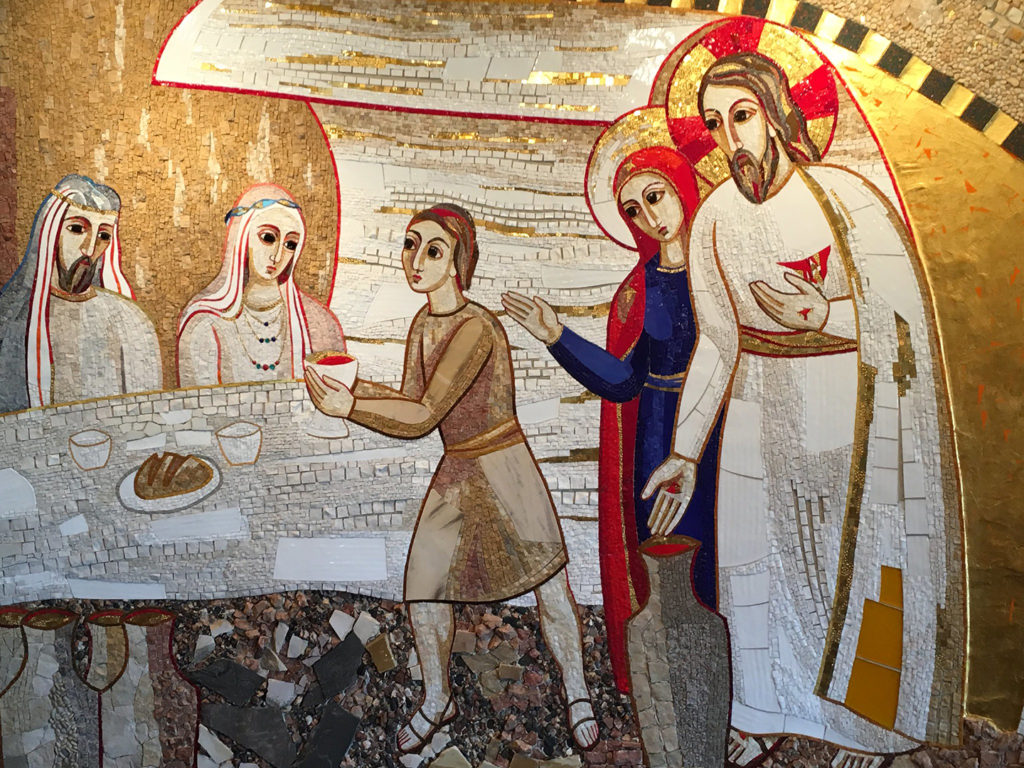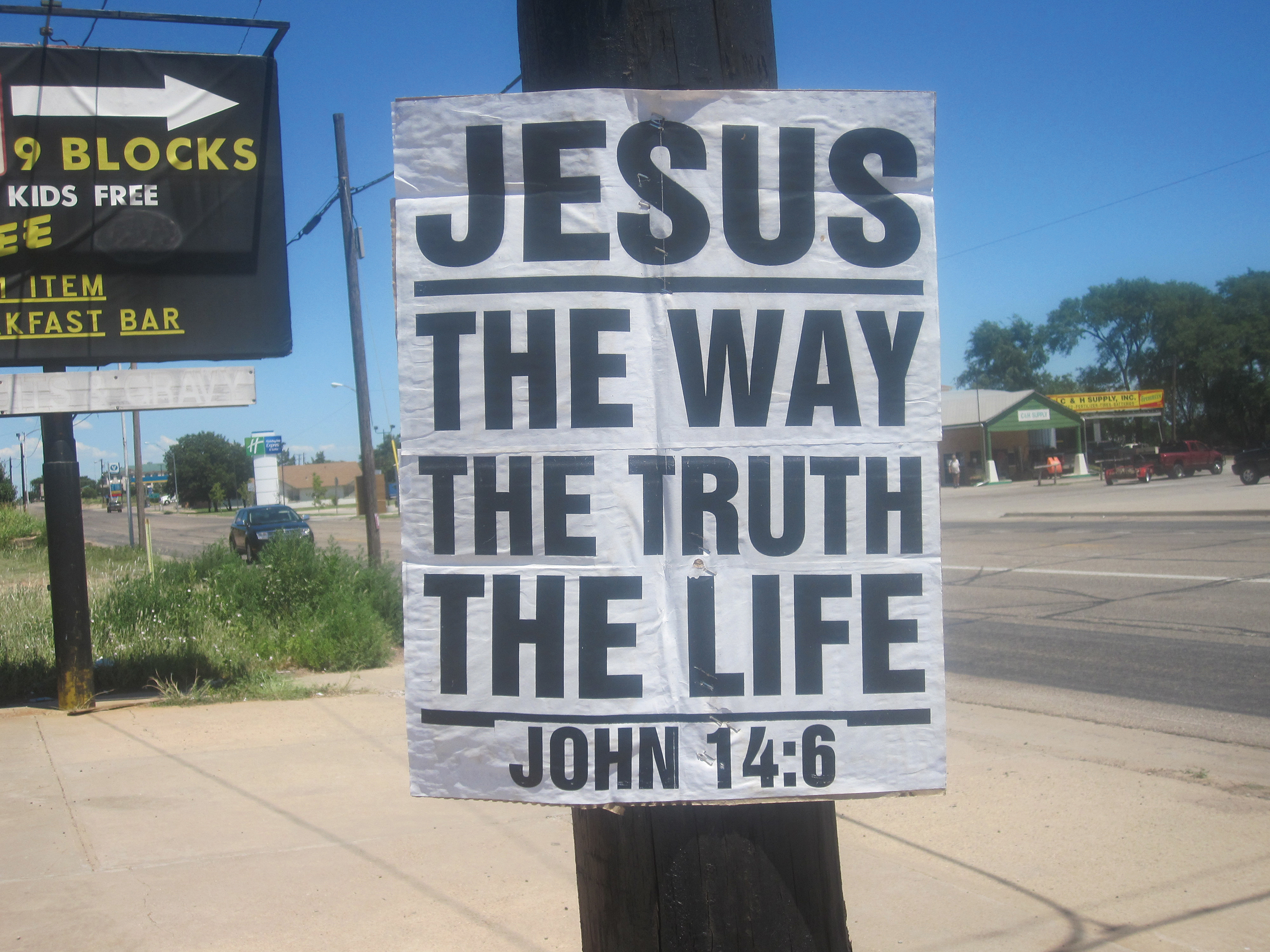
ARTS AND ENTERTAINMENT
This painting represents the turmoil experienced during a time of crisis. Typhoon is a symbol of anxiety, chaos, destruction and struggle. However, once those trial moments are surmounted, the inner energy of the typhoon brings transformation, putting life in order and strengthening one’s spirit. Emotional typhoon seems to tear life apart when it hits. One can’t turn away from it, but once it is over, it brings new potential; visions become clear and one sees brighter days ahead.
PAINTING BY FR RAUL TABARANZA MCCJ
THE LAST WORD

The wedding at Cana (Jn 2: 1–12)
BY Fr Silvano Fausti SJ | Biblist and writer
THE PASSAGE speaks of a wedding, of a shortage of wine, of servants, of six stone jars, of water and of beautiful wine, reserved until this moment. The bride is not named; the bridegroom only appears at the end, as the table master’s interlocutor. The wedding represents the covenant between God and the people, the wine that is lacking signifies the love of man that is failing; the stone jars for purification, which are empty, allude to the unfulfilled law. Water, the first element of creation, becomes ‘beautiful wine’, given at the end, that we can draw from ‘now’.
This scene is meant to immediately make us realise that God is shockingly different from what we imagine. The first sign of the Son of God is to add more than 600 litres of wine to a banquet! With all the hunger in the world and alcoholism, could he not have done something more useful and less futile? Perhaps Jesus changed water into wine knowing that His devotees would then abundantly turn the wine of the Gospel into the water of the law. Jesus appears giving an overabundance of ‘beautiful wine’ to a wedding feast that is languishing and dying for lack of wine.
In the Bible, the nuptial union is the highest symbol of the covenant between God and His people; a relationship of interest and care, of complicity and belonging, with feelings of trust and companionship, of tenderness and union, which make life beautiful. His coming is the ‘now’ in which the covenant is renewed and we experience the joy of meeting the Bridegroom. The Church is represented by the disciples to whom the glory of Jesus is manifested: they understand the sign of the wine and believe in Him.
The narrative focuses on the gratuitousness and greatness of the gift. The presence of Jesus is the renewal of the covenant, the beginning of the eschatological wedding. The passage is to be read, not only as a sign, but as ‘the beginning of signs’, as a symbol which illuminates what the Gospel will later tell about Jesus of Nazareth. Just as the healing of the blind man manifests that Jesus is light, the gift of bread that He is food, and the resurrection of Lazarus that He is life, so the beautiful wine manifests His glory: Jesus is the Bridegroom. With Him has come the hour in which the wedding between God and His people is consummated.
With Jesus has come the hour in which the wedding between God and His people is consummated
From the story also emerges the continuity of the one covenant, both ancient and new, like the commandment of love (1 Jn 2: 7), of universal value. Indeed, the beautiful wine of the Gospel is drawn from the stone jars, symbol of the law.
Wine in fact comes from water, the primordial element of creation, and makes its first appearance with Noah, after the Flood and the renewal of the cosmic covenant (Gen 9: 20, 21).
The drama of Israel is the same as that of every man, being ‘the lack of wine’. Where is the love, joy and life for which we were made and of which we feel defrauded? Through Jesus, the Word becomes flesh—everyone can taste the wine offered in abundance. With Him is realised the blessing promised to Abraham and, in Him, to all nations (Gen 12: 2).
With this sign, Jesus did not cure someone of an illness, as He would do elsewhere; He simply saved us from that subtle evil that destroys our humanity, ‘the lack of wine’, being the absence of love and joy. Jesus, the Word became flesh, God and man, is heaven opened on earth.

